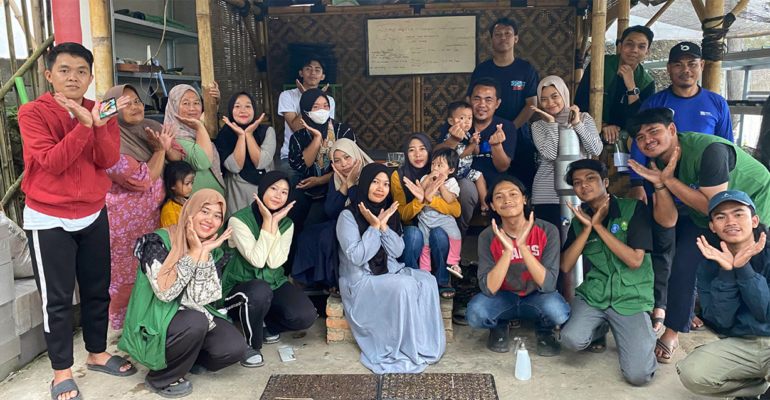IPB University Students Give Biointensive Nursery Training and Climate Instrumentation for Cibunian Residents

The Agrometeorology Student Association (Himagreto) of IPB University through the implementation team of the Student Organization Capacity Strengthening Program (PPK Ormawa) held nursery and instrumentation training for the Cibunian community, Bogor, West Java (22/9). This activity aims to improve community skills in the field of nursery and utilization of meteorological instrumentation.
On this occasion, Achmad Nur, a student of IPB University as well as a representative of the PPK Ormawa Himagreto team, introduced the biointensive nursery method. He said that the method focuses on land use efficiency and improving seedling quality.
He explained that in practice, the community learns how to choose superior seeds, prepare planting media, and seeding and seedling care techniques to produce strong and pest-resistant plants. “With this biointensive technique, we can produce healthier and stronger seedlings, while maintaining soil fertility naturally,” said Achmad Nur.
Meanwhile, Luluk, an IPB University student from the Applied Meteorology Study Program, explained the important tools used to monitor local weather and climate conditions. Some of the tools introduced included an ombrometer.
Luluk said that the ombrometer is an important rainfall measuring tool to determine the level of irrigation needed by plants. This tool can be used to measure daily and weekly rainfall so that the community can monitor in real-time.
The next tool introduced was the hygrometer. Hygrometer is a tool used to measure air humidity. “Air humidity affects the need for water for plants, especially in the dry season. Therefore, it is important to understand the humidity level to prevent drought that can disrupt plant growth,” said Luluk.
Asep, who is also a student of IPB University, explained about the use of the Automatic Weather Station (AWS) website. Through the website, he said, we can access real-time weather data.
“People are taught to read data such as rainfall, temperature, humidity, and wind speed. This information is very helpful in determining the right planting time and anticipating extreme weather conditions that can damage crops,” said Asep.
One of the participants, Ratih, said, “This activity helped me to know about how to make a good nursery on planting media and how to determine planting patterns and irrigation through weather measurements.”
She hopes that the training on nursery and meteorological instrumentation will be a solution for the Cibunian community in facing the challenges of climate change and increasing agricultural productivity.
With the application of biointensive nursery techniques and the use of meteorological instrumentation tools, the community can carry out better and more efficient crop planning. This training is also expected to continue to strengthen the capacity of farmers in the future. (IAAS/Aly)



